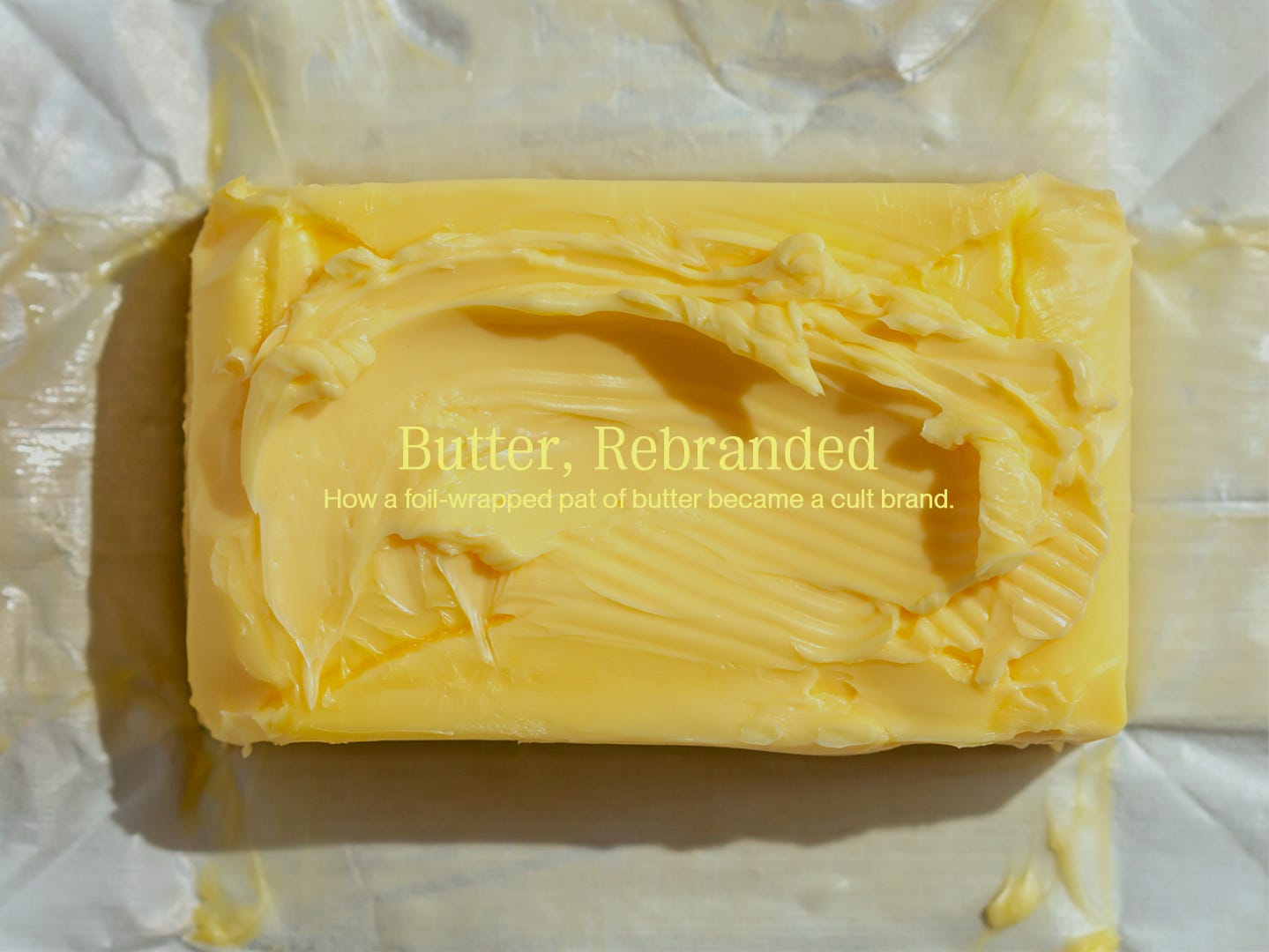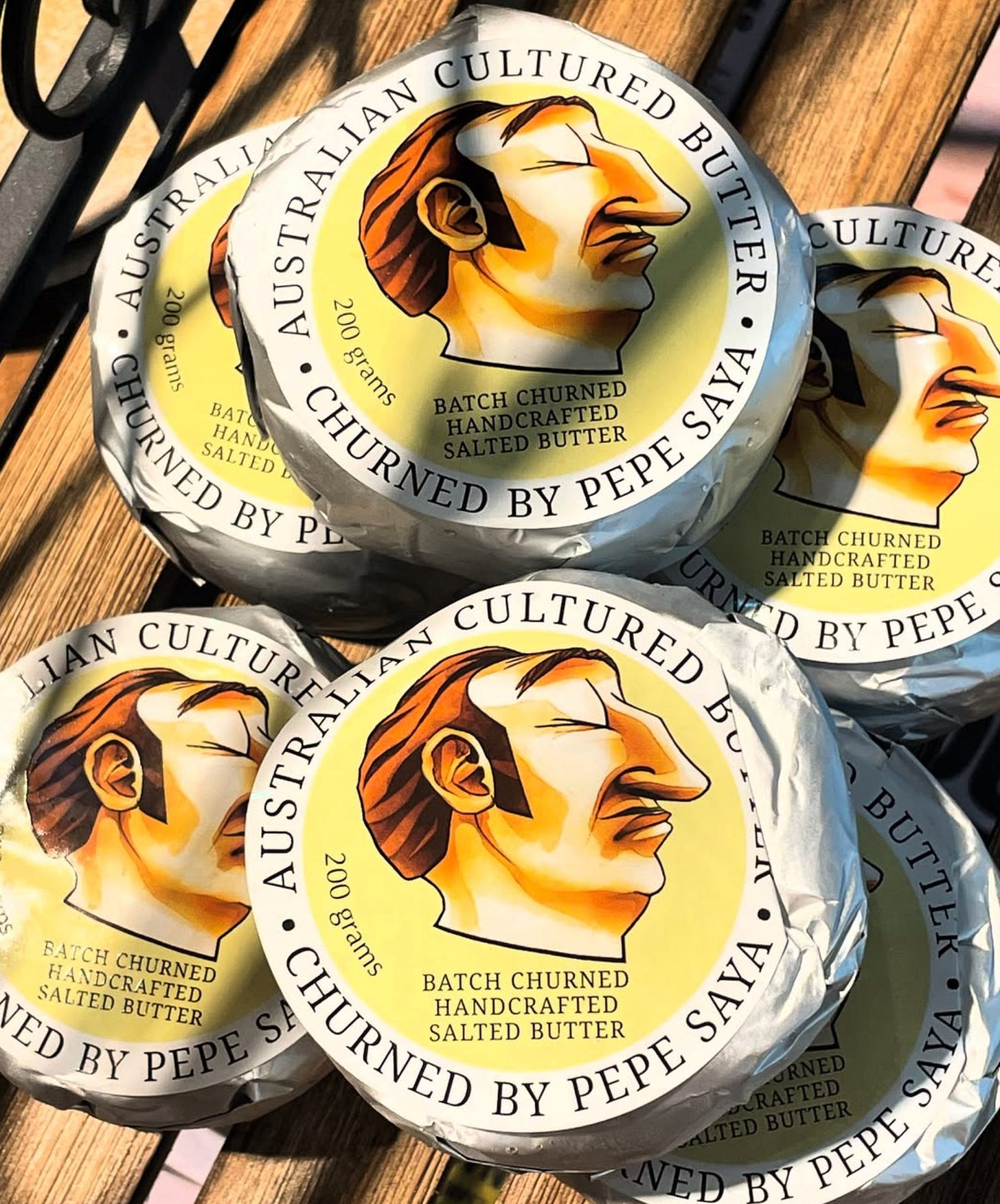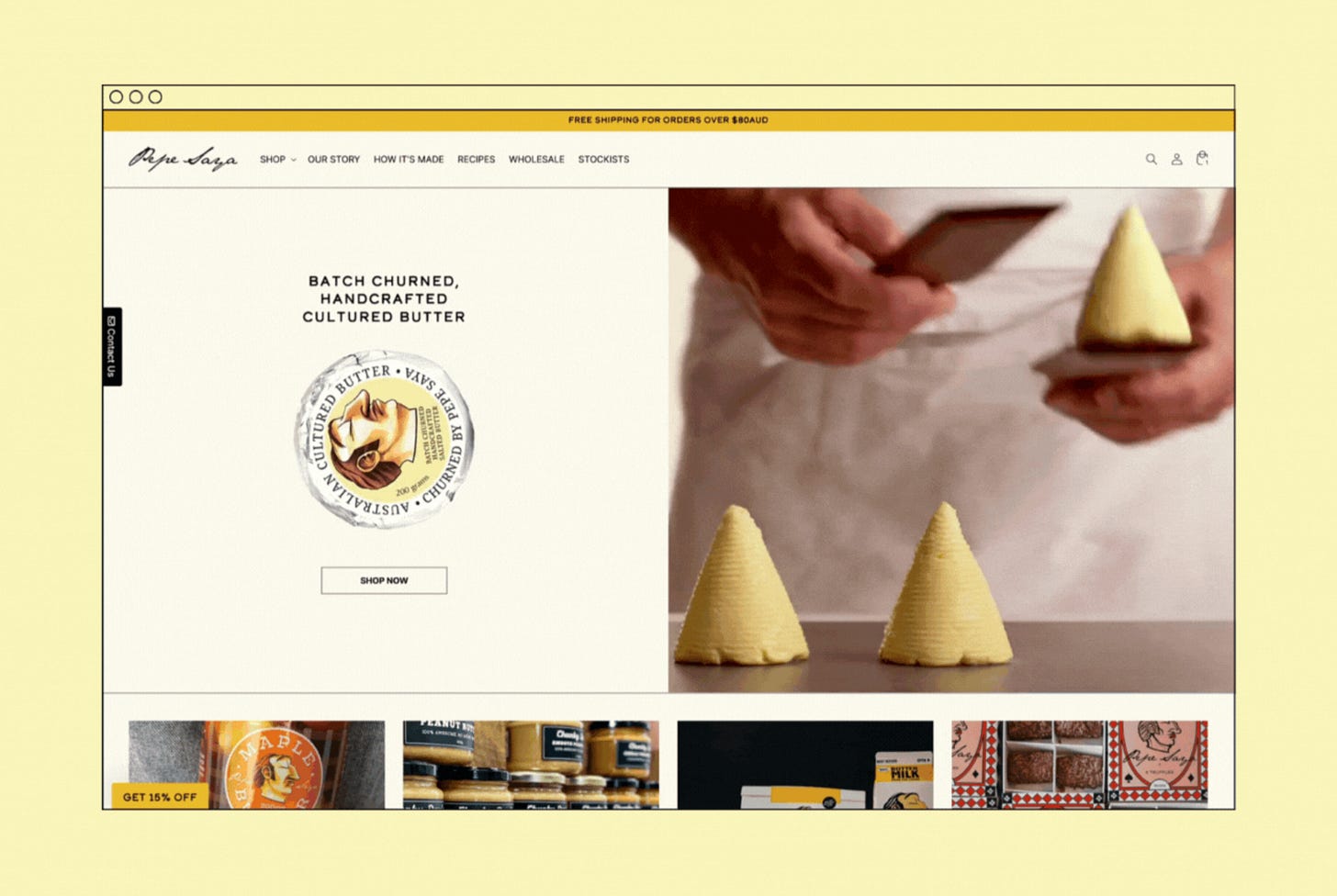Remember when butter was just... butter? A silent fridge resident. A pale slab in a plastic tub. Functional, sure, but forgettable. You used it because you needed to, not because you noticed it. It was never part of the story.
And then came Pepe Saya, and butter got interesting.
It got heritage. It got soul. It got a face.
Suddenly, butter wasn’t just something you smeared on toast, it was a small act of reverence. A cult product wrapped in foil and story.
So how did a humble pantry item become a national treasure?
Not by accident. This is branding done right.
1. Craft comes first (and people feel it)
Pepe Saya doesn’t just sell butter, they bottle up the energy of a market morning, the patience of hand-churning, the pride of a farmer.
What started as a quiet stall at Sydney’s Carriageworks has become a symbol of Australian food craftsmanship. There’s no mass-produced mystery here, just cream, cultures, and care. Their story is grounded in place, process, and the people behind it. That matters. Especially now.
From sourcing milk directly from local farmers to collaborating with Amish dairies in Pennsylvania, the message is clear: good things take time. And values.
2. Packaging that actually says something
Most butter packaging looks like it gave up before it began. But Pepe Saya put a face on it. Literally.
The caricature of “Pepe” isn’t just quirky. It’s intentional. It gives the brand warmth, familiarity, and personality in a category that’s famously flat. Combine that with the signature round pat, wrapped in foil like it was made to be gifted, and you’ve got a product that looks and feels like it matters.
This is butter you notice on the shelf, on the plate, and in the memory.
And that’s rare.
3. Transparency is the new luxury
In a world of “trust me” marketing, Pepe Saya opens the doors.
They show the churn. They show the cultures. They show the people behind the process. Not to brag—but to invite. There’s power in pulling back the curtain, in letting people feel close to the making. It’s intimate, it’s honest, and it’s sticky in the best way.
The result? A brand people believe in. Not because it shouts, but because it shares.
4. Education is part of the experience
Pepe Saya doesn’t just sell butter, they teach people how to taste it.
Their farmers market team talks flakiness, fermentation, and flavour like it’s gospel (because it kind of is). Their pop-ups are part masterclass, part movement. And their online content makes it easy for everyone, from chefs to curious home cooks to go deeper.
This is brand-building as hospitality. Inviting people into the knowledge, not gatekeeping it.
5. Slow burn, big impact
Instead of pushing, they partnered. With chefs. With Qantas. With the kind of brands that signal quality by association.
That quiet confidence paid off. Neil Perry was an early believer. Then came kitchens, restaurants, and finally homes, all wanting a taste of what felt different. It wasn’t hype. It was conviction.
And suddenly, a little round pat of butter became shorthand for craftsmanship and care.
They didn’t rebrand butter.
They redefined it.
This is what happens when a product is wrapped in story, shaped by values, and delivered with charm. It’s proof that even the most ordinary thing can become extraordinary—if you treat it like it matters.
Because branding isn’t just about aesthetics or marketing.
It’s about belief. And when your audience feels what you believe, that’s when the magic happens.
So whether you’re building butter, bread, or a new brand, don’t rush the story.
Shape it with your hands. Infuse it with your values.
And let it rise.
À bientôt!
Mary








